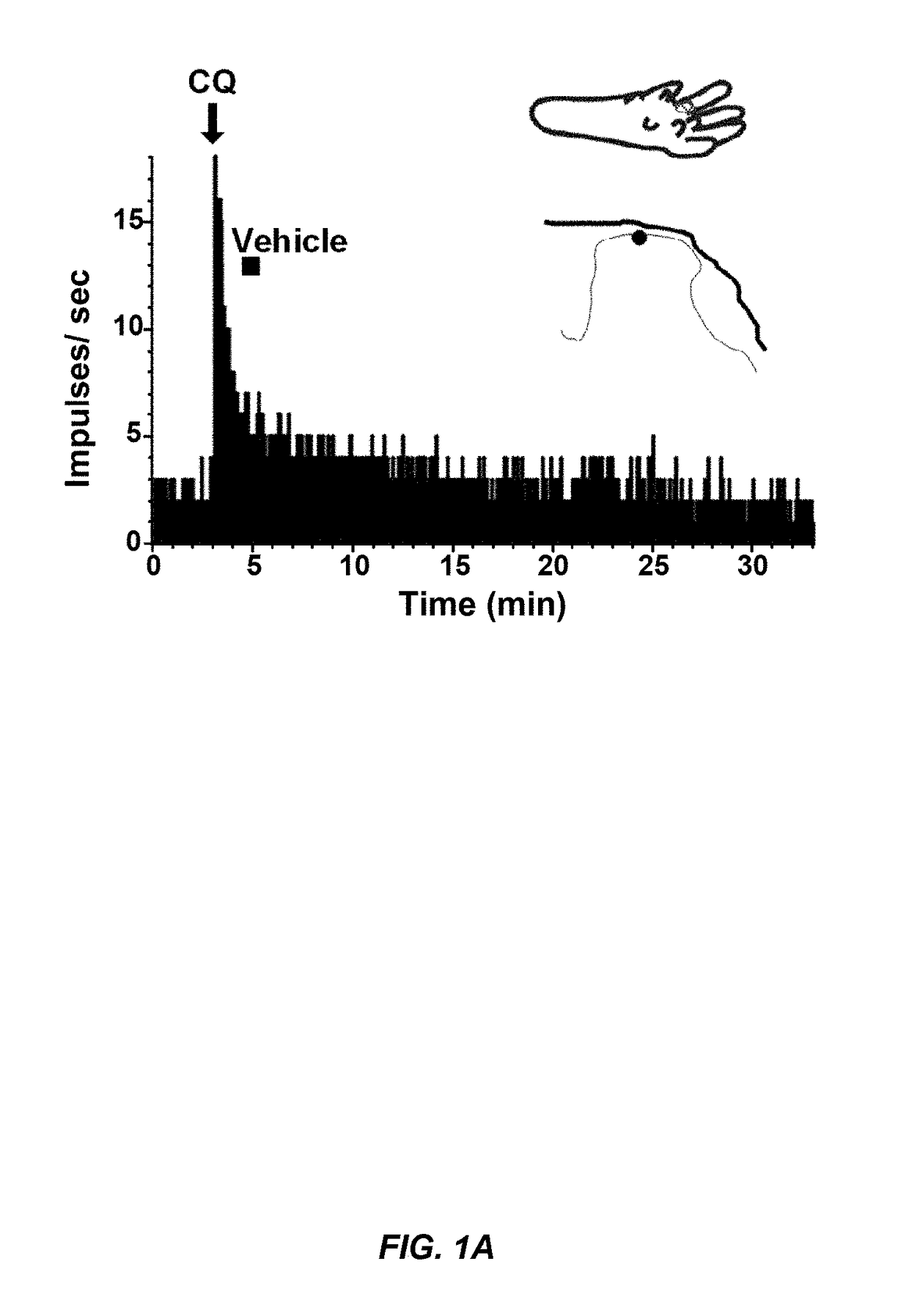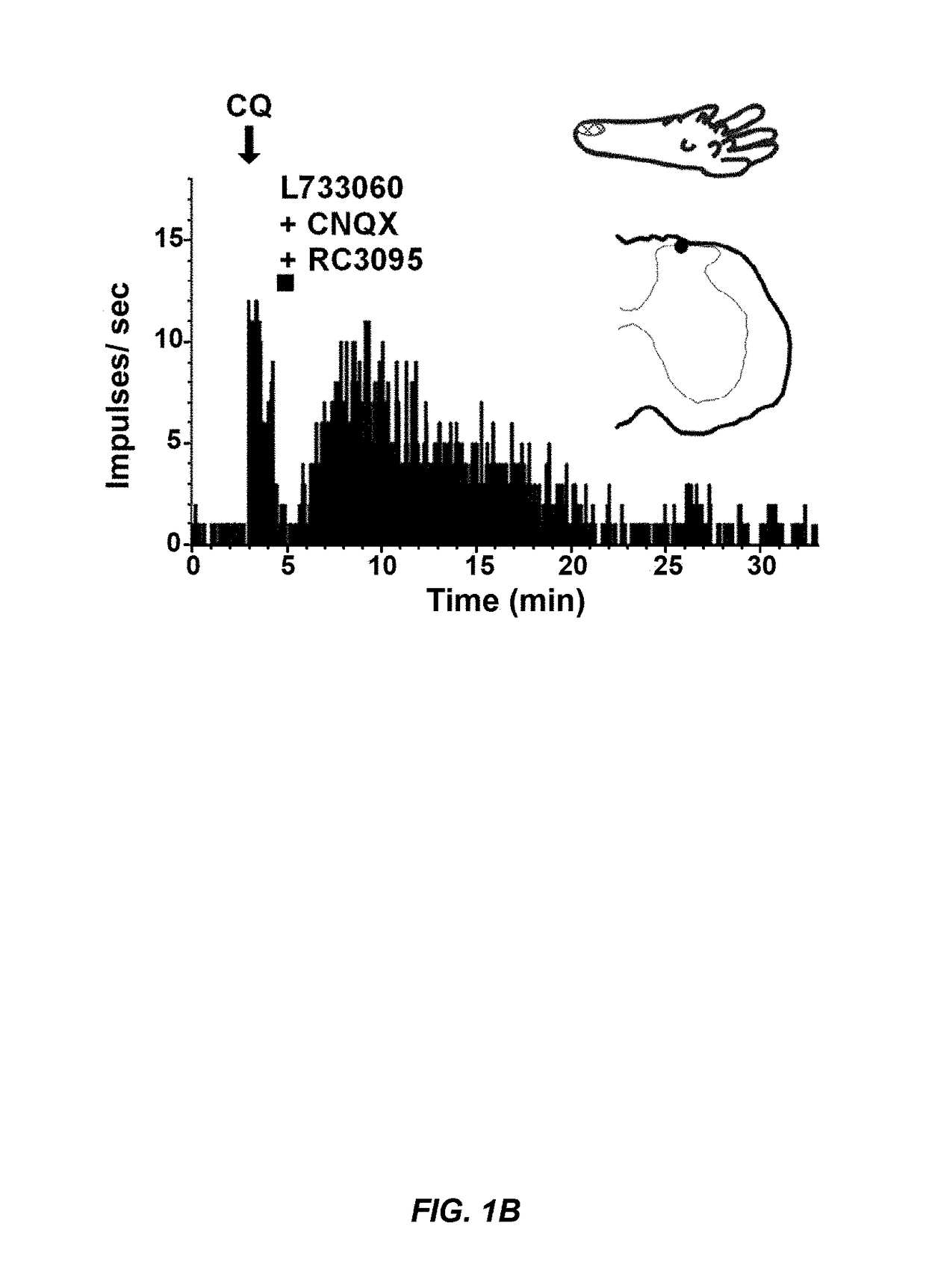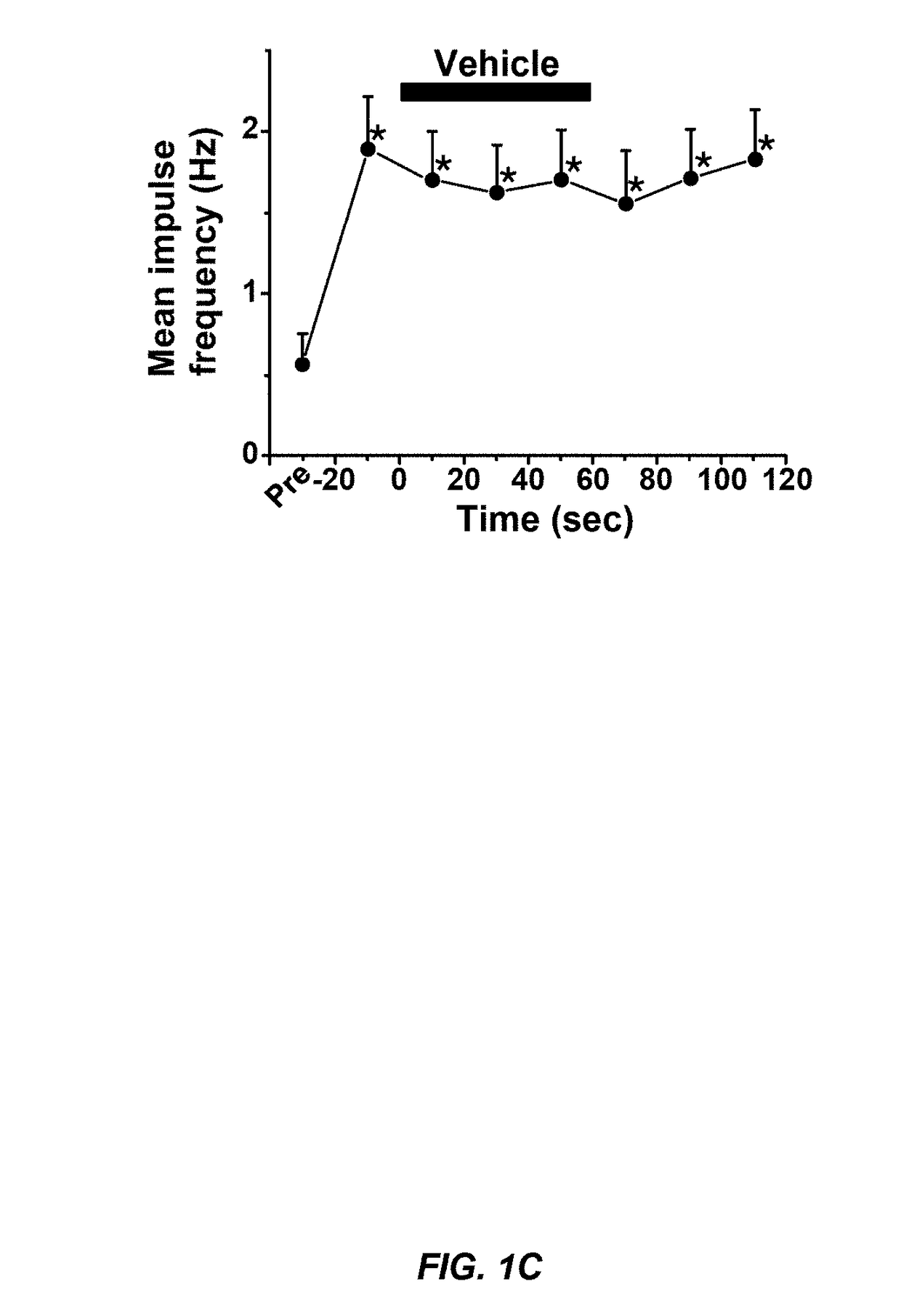Itch treatment using a combination of neurokinin-1, gastrin releasing peptide, and glutamate receptor antagonists
a technology of glutamate receptor and neurokinin, which is applied in the direction of peptide/protein ingredients, organic active ingredients, pharmaceutical active ingredients, etc., can solve the problems of reducing life quality, the neuronal mechanisms of itch are still not fully understood, etc., and achieves the effects of reducing the excitation of inhibitory interneurons, reducing input, and reducing glutamatergic transmission
- Summary
- Abstract
- Description
- Claims
- Application Information
AI Technical Summary
Problems solved by technology
Method used
Image
Examples
example 1
Abstract
[0069]The roles of substance P (SP), gastrin-releasing peptide (GRP), and glutamate in the spinal neurotransmission of histamine-dependent and -independent itch were investigated. In anesthetized mice, responses of single superficial dorsal horn neurons to intradermal (id) injection of chloroquine were reduced by spinal application of the AMPA / kainate antagonist CNQX. Co-application of CNQX plus a neurokinin-1 (NK-1) antagonist produced stronger inhibition, while co-application of CNQX, NK-1 and GRP receptor (GRPR) antagonists completely inhibited firing. Nociceptive-specific and wide dynamic range-type neurons exhibited differential suppression by CNQX plus either the GRPR or NK-1 antagonist, respectively. Neuronal responses elicited by id histamine were abolished by CNQX alone. In behavioral studies, individual intrathecal administration of a GRPR, NK-1 or AMPA antagonist each significantly attenuated chloroquine-evoked scratching behavior. Co-administration of the NK-1 an...
PUM
| Property | Measurement | Unit |
|---|---|---|
| weight | aaaaa | aaaaa |
| weight | aaaaa | aaaaa |
| weight | aaaaa | aaaaa |
Abstract
Description
Claims
Application Information
 Login to View More
Login to View More - R&D
- Intellectual Property
- Life Sciences
- Materials
- Tech Scout
- Unparalleled Data Quality
- Higher Quality Content
- 60% Fewer Hallucinations
Browse by: Latest US Patents, China's latest patents, Technical Efficacy Thesaurus, Application Domain, Technology Topic, Popular Technical Reports.
© 2025 PatSnap. All rights reserved.Legal|Privacy policy|Modern Slavery Act Transparency Statement|Sitemap|About US| Contact US: help@patsnap.com



